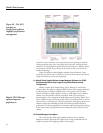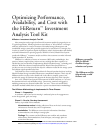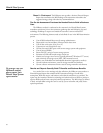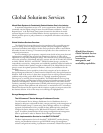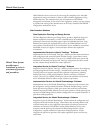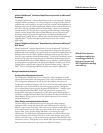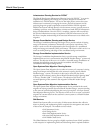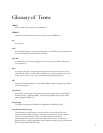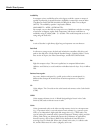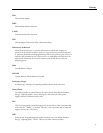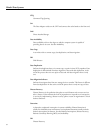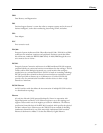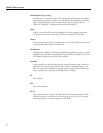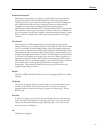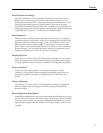
Availability
In computer science, availability refers to the degree to which a system or resource is
capable of performing its normal function. Availability is measured in terms of Mean
Time Between Failure (MTBF) divided by MTBF plus the Mean Time to Repair
(MTTR). The availability equation is expressed as follows:
AVAILABILITY = MTBF / (MTBF+MTTR).
For example, a server that fails on average once every 5,000 hours and takes an average
of two hours to diagnose, replace faulty components, and reboot, would have an
a va i l a b i l i t y rating of 5,000/(5,000 + 2) = 99.96%. This would correspond to a Level 3
rating using the Scale of 9s.
Byte
A unit of data that is eight binary digits long and represents one text character.
Back End
In reference to storage arrays, the back end includes the controllers, disk drives, and
paths to the disk drives. On the Hitachi Freedom Storage
™
Lightning 9900
™
V Series
these are the ACP pairs, the Fibre Channel loops, and the Fibre Channel disks.
Bit
Eight bits compose a byte. This term is spelled out in compound abbreviations
(Mbit/sec and Gbit/sec) to avoid confusion with abbreviation for byte - B (as in MB or
GB).
Business Interruption
Any event, whether anticipated (i.e., public service strike) or unanticipated (i.e.,
blackout) that disrupts the normal course of business operations at a corporate
location.
CA
Cache Adapter. The CA resides on the cache boards and connects to the Cache Switch
(CSW).
CARB
Cache memory arbitrator circuit. A Hitachi-designed logical circuit in the Cache
Switch (CSW) used to arbitrate access to cache.
Cache
Cache (pronounced cash) can be either on-chip memory circuits in a microprocessor
(e.g., L2 processor cache), a reserved section of main memory (e.g., system or server
cache), or an independent, high-speed disk storage device (e.g., a Web cache). Two
types of caching are commonly used in personal computers: memory caching and disk
caching. Disk caching can dramatically improve the performance of applications,
because accessing a byte of data in RAM can be thousands of times faster than
accessing a byte on a hard disk. When data is found in the cache, it is called a cache
hit, and the effectiveness of a cache is judged by its hit rate.
Hitachi Data Sy s t e m s
56



